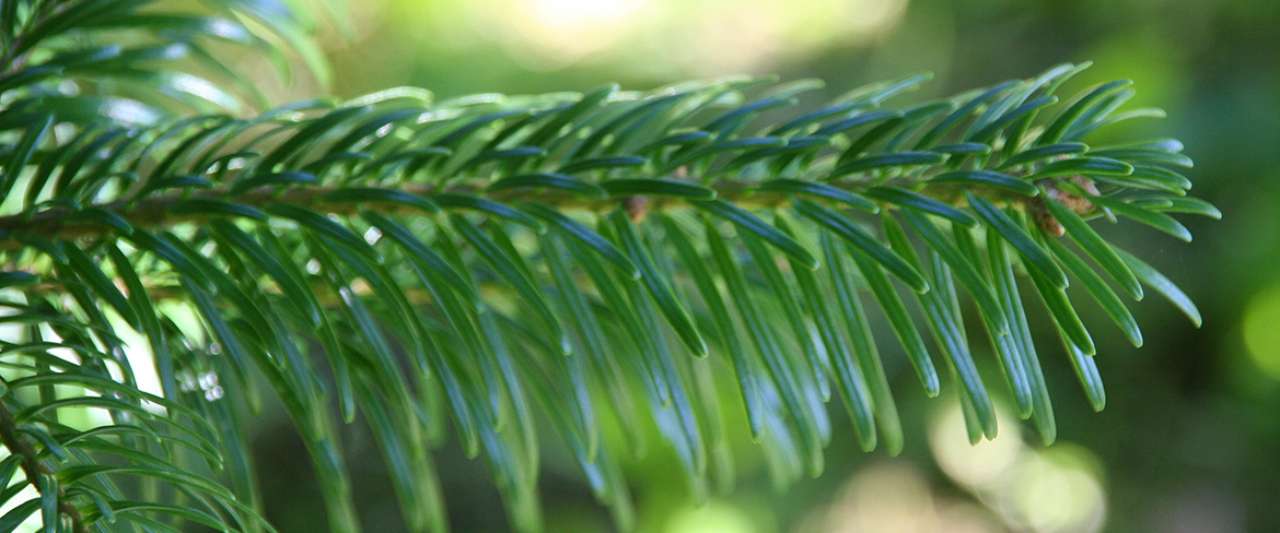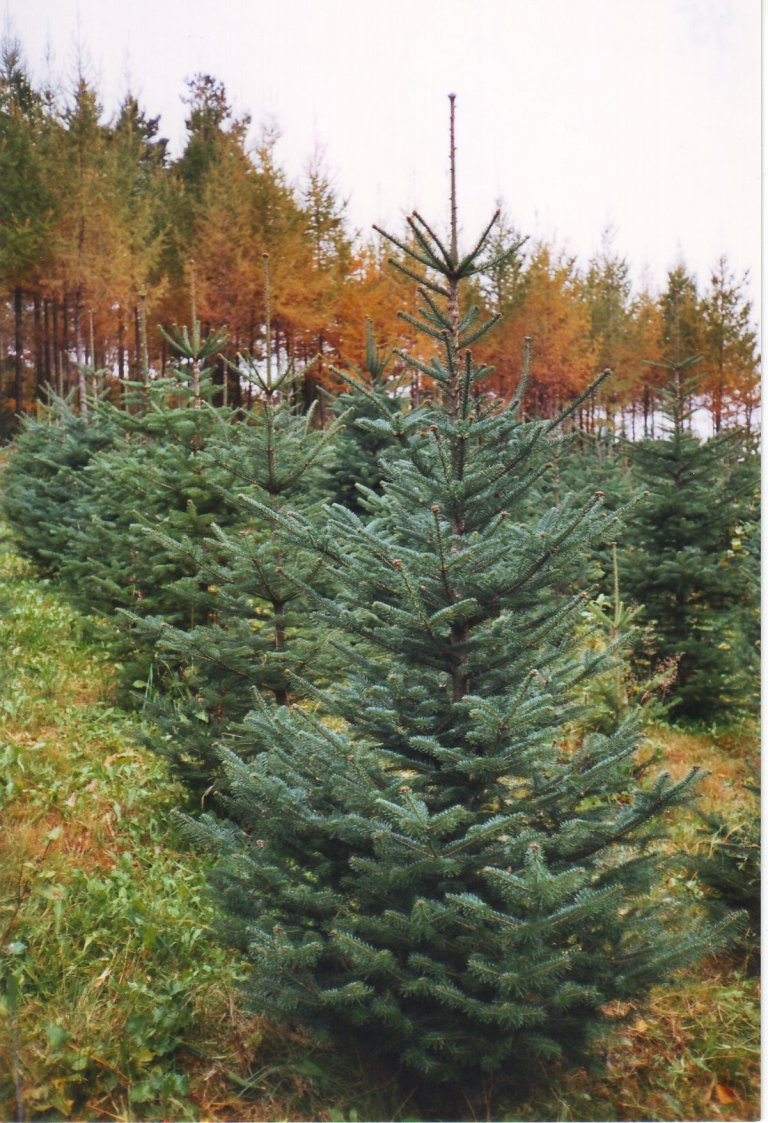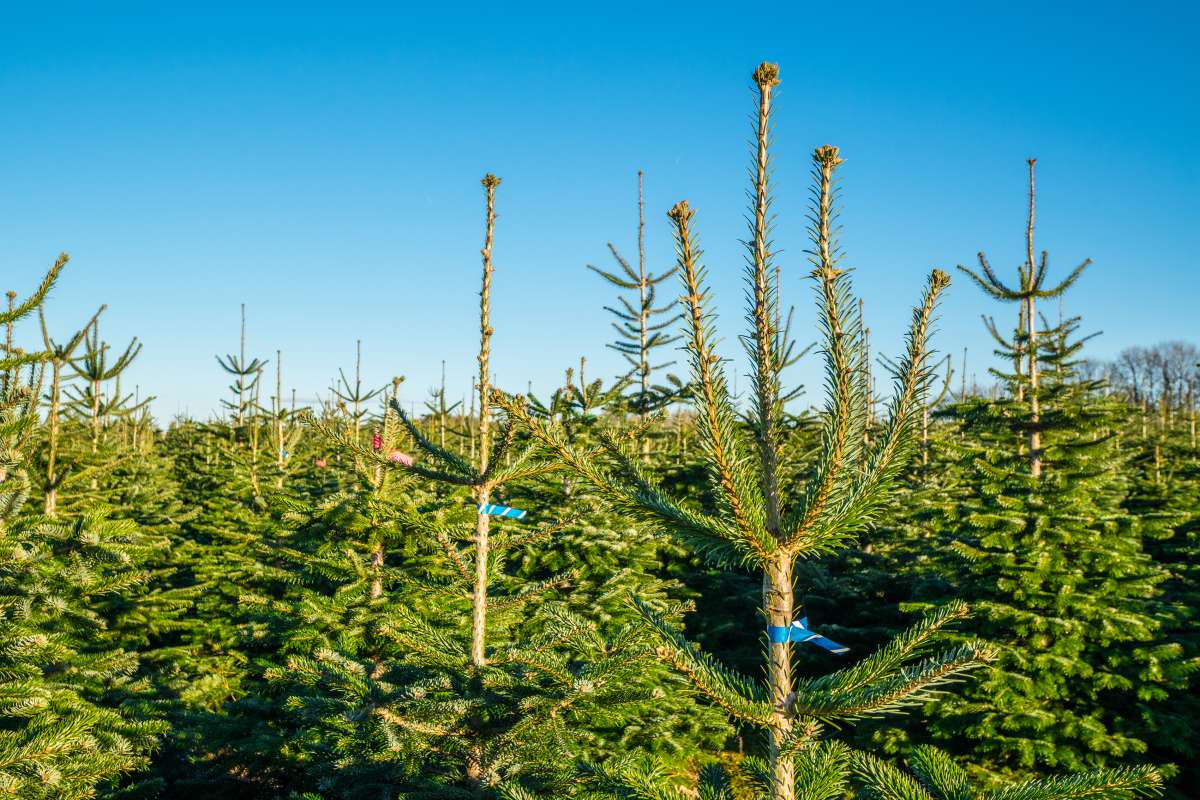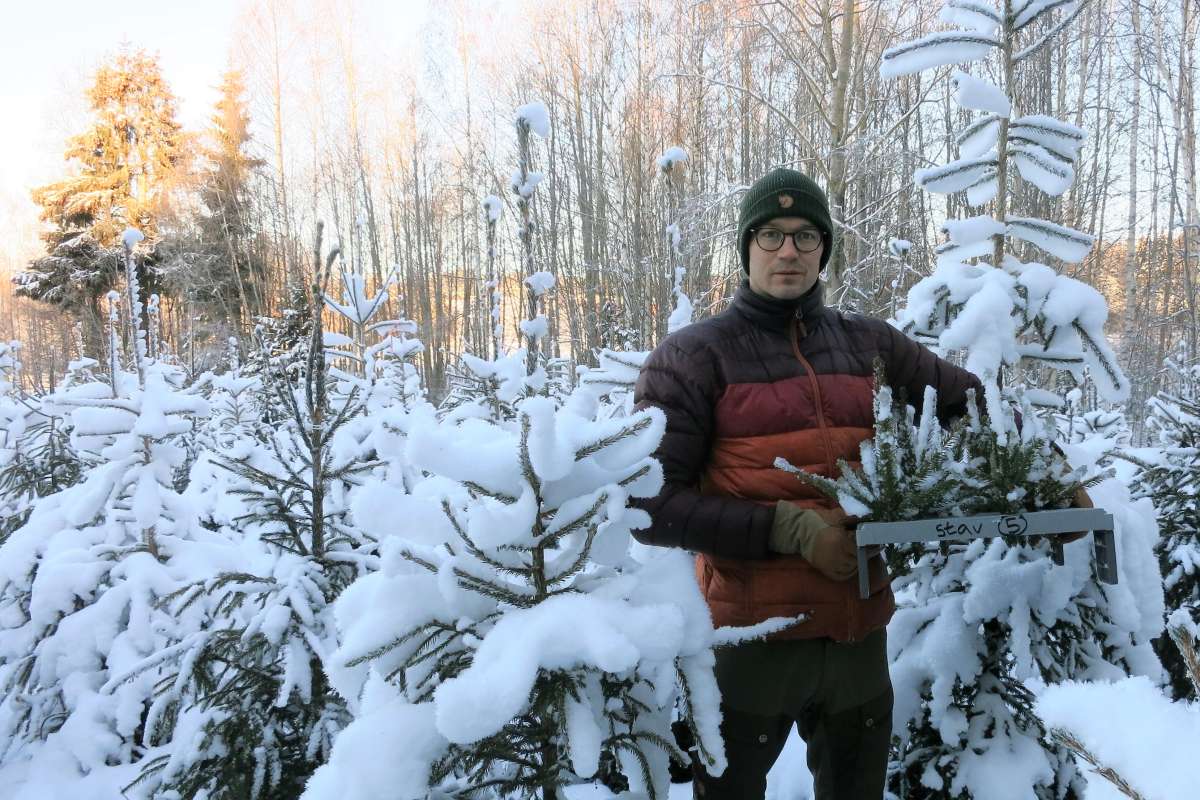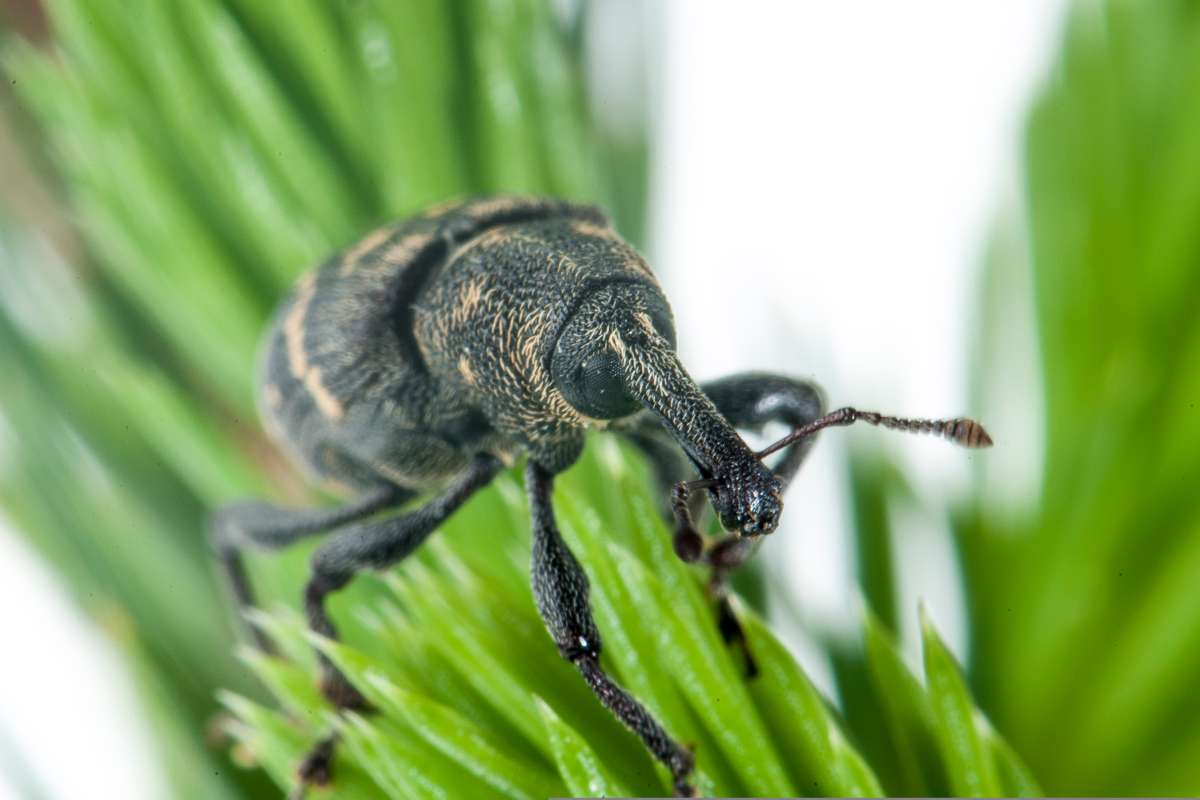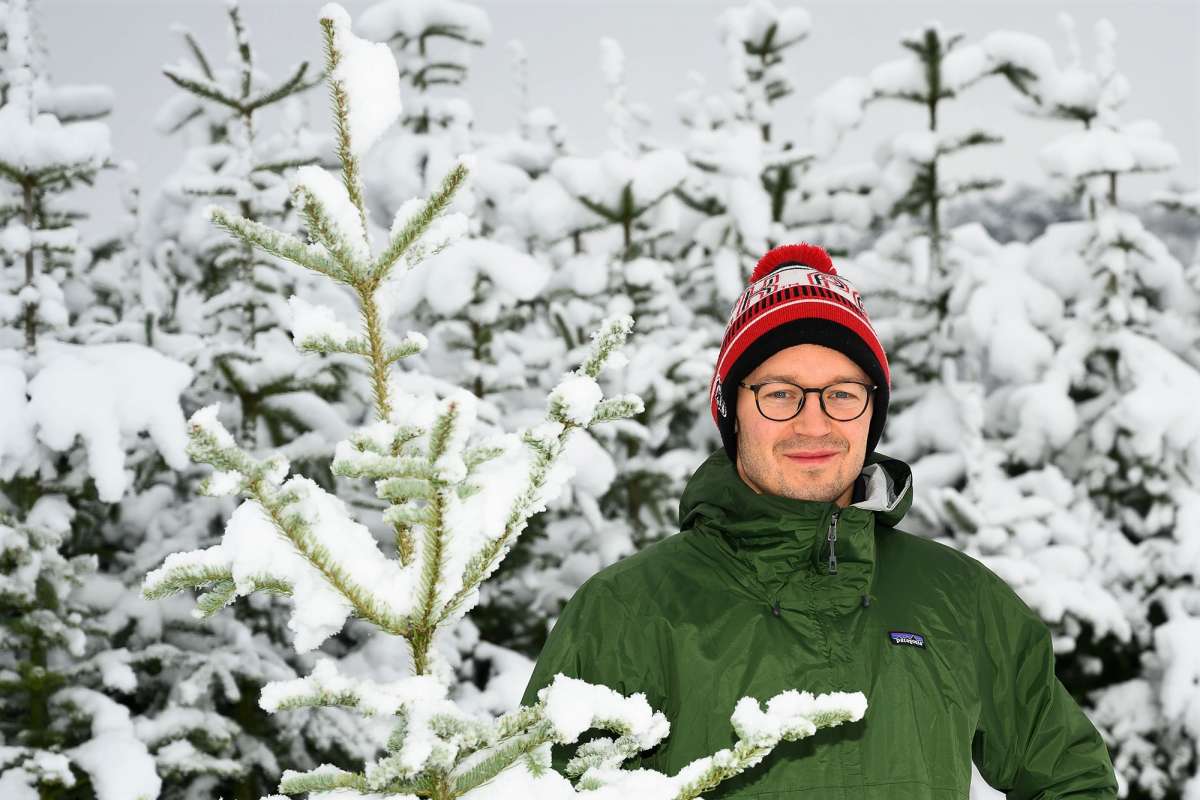Kunnskapsutvikling
Målet har hele tiden vært å bistå bransjen med kunnskap som gir økt effektivitet i produksjonen og bedre kvalitet og holdbarhet på juletrærne. Derfor samarbeider vi tett med dyrkernes medlemsorganisasjon Norsk Juletre (se lenke til venstre).
Prosjektutvikling sammen med juletredyrkernes veiledningstjeneste sikrer medvirkning i prosjektene og relevante problemstillinger.
NIBIOs forskning på juletreområdet holder et høyt nivå også i et internasjonalt perspektiv. Den internasjonale forskerorganisasjonen IUFRO har et eget nettverk hvor juletreforskere og rådgivere møtes hvert annet år for å utveksle oppdatert kunnskap. Erfaringsutvekslingen gjennom forskerkollegaer i Europa og USA har bidratt til å løfte produksjonen i Norge.
Valg av treart
Tradisjonelt ble vanlig gran (Picea abies) og noe furu (Pinus sylvestris) valgt som juletre fra foryngelsesfelt i skogen.
Edelgran (Abies) har lenge vært dyrket i stor målestokk som juletre i Danmark, og også eksportert til Norge. Etter hvert som dyrkingen ble satt i system her i landet, ble det interessant å prøve ut nye arter.
Arter fra slekten edelgran har nålefeste som gjør at nålene sitter lenger på kvisten enn på arter fra granslekta. Nordmannsedelgran (A. nordmanniana) og fjelledelgran (A. lasiocarpa) er i dag de to mest dyrkede juletre-artene i Norge, i tillegg dyrkes blant annet sibiredelgran (A. sibirica), fraseredelgran (A. fraseri) og koreaedelgran (A. koreana).
I granslekta er det også flere arter som dyrkes som juletre i tillegg vår vanlige gran, både serbergran (Picea omorika) og engelmannsgran (P. engelmanni), regnes å ha noe bedre nålefasthet enn vanlig gran, selv om holdbarheten ikke er like lang som edelgranene.
Også innen samme art varierer juletreets egenskaper etter hvor frøene er sanket. Det har vært testet mye ulikt frømateriale for å finne frem til hvilke trearter og frøkilder som egner seg for norske dyrkingsforhold.
I dag bygger Skogfrøverket videre på denne kunnskapen og har etablert egne felt for frøproduksjon av utvalgte frøkilder (lenke til Skogfrøverket under bildet til venstre).
Holdbarhet på juletre
Det er som nevnt en del variasjon mellom ulike arter på hvor mye juletrærne drysser. Heldigvis er det også en del forbrukeren selv kan gjøre for å bedre holdbarheten til trærne.
- Transport: Det første som er lurt å huske på er transporten av juletreet fra innkjøpsstedet og hjem. Når treet er festet på taket av bilen blir det veldig eksponert for kulde og vind hvis det kjøres langt. Dekk derfor gjerne treet under transporten.
- Akklimatisering: Det neste som er lurt å huske på er akklimatisering. Hvis det er frost ute når juletreet skal tas inn, må det gravis tilvennes inneklimaet før det settes inn i stuetemperatur. En kald gang, bod, garasje eller kjeller kan være en bra mellomstasjon for å tine juletreet.
- Kutt stammen og fyll på med vann: Når treet skal settes inn, er det viktig å bruke en juletrefot der treet har tilgang på vann. Et ferskt snitt på stammen gjør at treet lettere kan ta opp vann. Skjær derfor av de nederste 2-3 cm av stammen. De første par dagene bruker treet mye vann så det er viktig å etterfylle, tilsvarende som en behandler snittblomster.
Plantehelse og juletre
Svært mange av de dyrkingstekniske tiltakene som gjennomføres i dag, er gode også når det gjelder å forebygge skadegjørere i juletrefelt. Dette er i tråd med prinsippene for integrert plantevern (IPV) og NIBIO har laget IPV veiledere også for juletre (se lenke til venstre).
Friske småplanter sikrer god etablering og man unngår å bringe inn nye skadegjørere. Drenering gir også bedre etablering, noe som gjør juletrærne mer konkurransesterke mot ugras og reduserer risikoen for angrep av jordboende skadegjørere som Phytophthora.
Vegetasjon rundt juletrefeltene kan ha viktig betydning som le, og være et reservoar for nyttedyr og pollinerende insekter, men man bør unngå bartrær som kantvegetasjon da de kan være vertplanter for både skadedyr og sjukdomsorganismer.
Ugras tett på juletrærne fører til sterk konkurranse om vann og næring og gir redusert tilvekst og kvalitet. Visse ugrasarter kan også gi økte problemer med sykdommer i trærne. Det er derfor av stor verdi for produsentene å holde ugraset nede gjennom hele produksjonstiden.
En rekke sjukdommer har blitt kartlagt gjennom prosjekter i NIBIO. Noen av disse er nye som skadegjørere i Norge. For å kunne forebygge sjukdommer er det viktig å kjenne tidlige symptomer og spredningsmønster. På samme måte har identifikasjon av skadedyr betydning for å kunne forebygge og sette inn tiltak ved behov.
For å hjelpe med identifikasjon av skader, har NIBIO laget boka "Skader i juletrefelt –biotiske og abiotiske årsaker" som selges av Skogkurs (se lenke til venstre).


